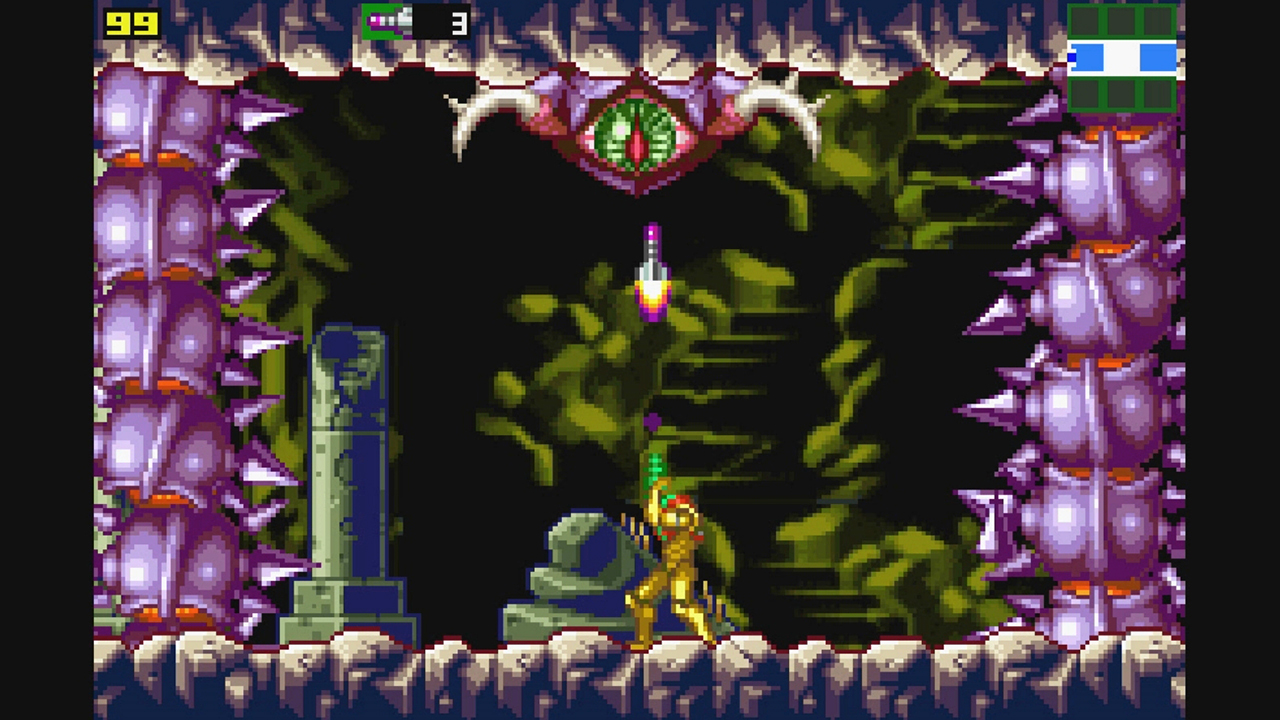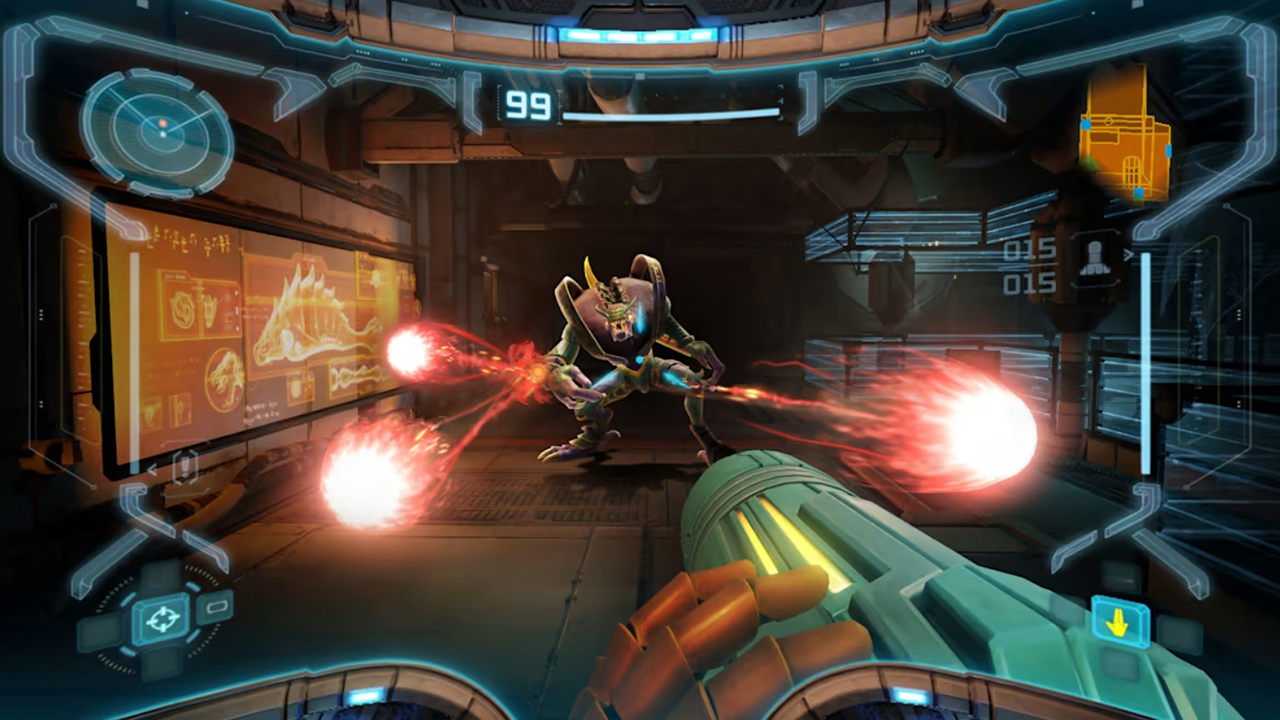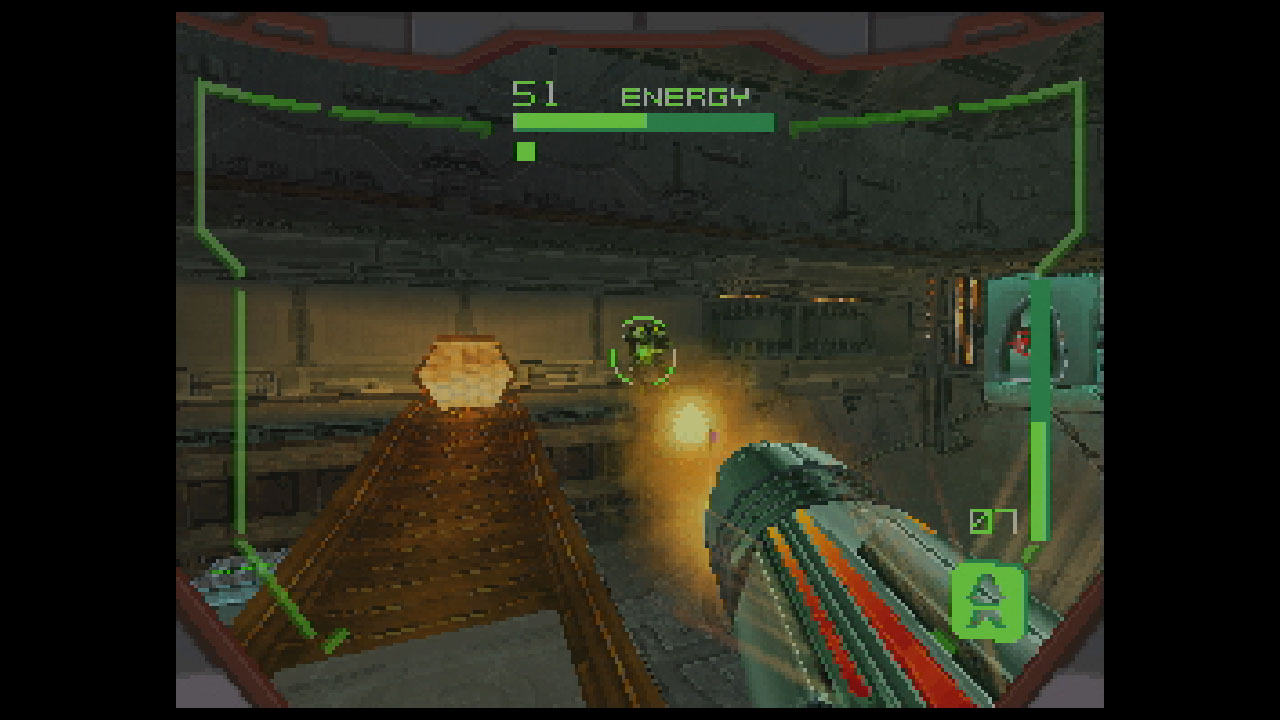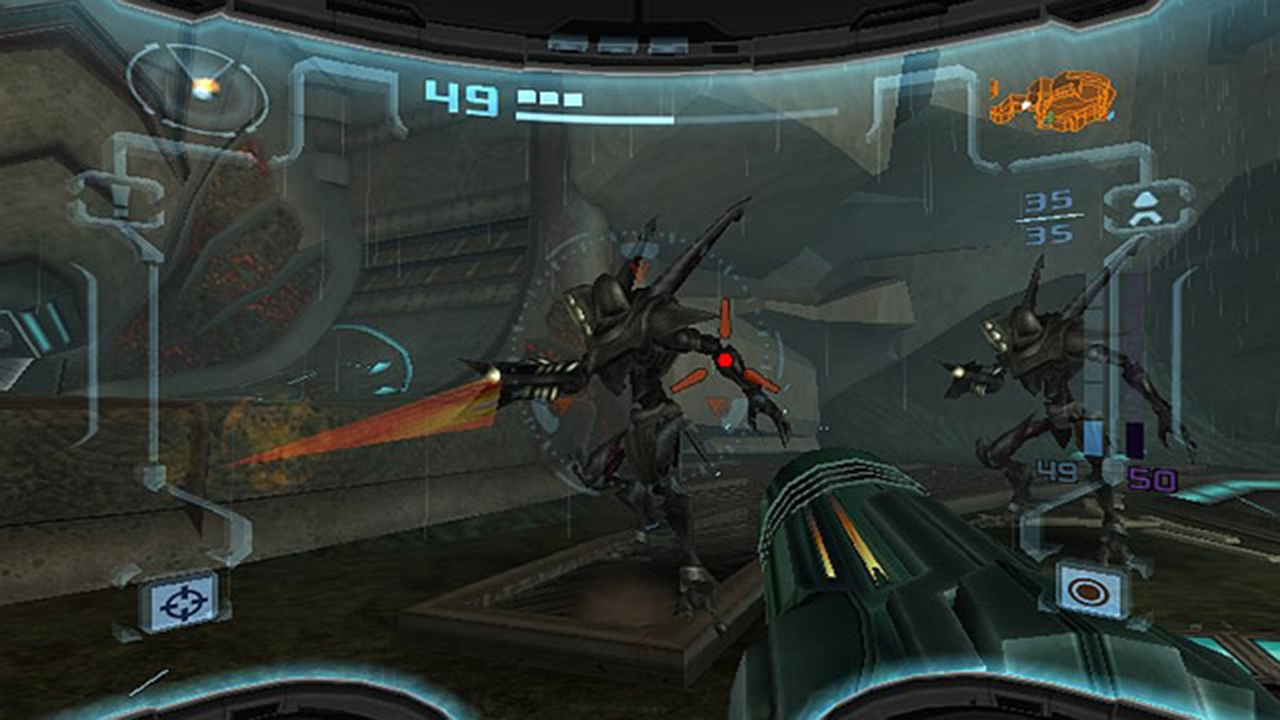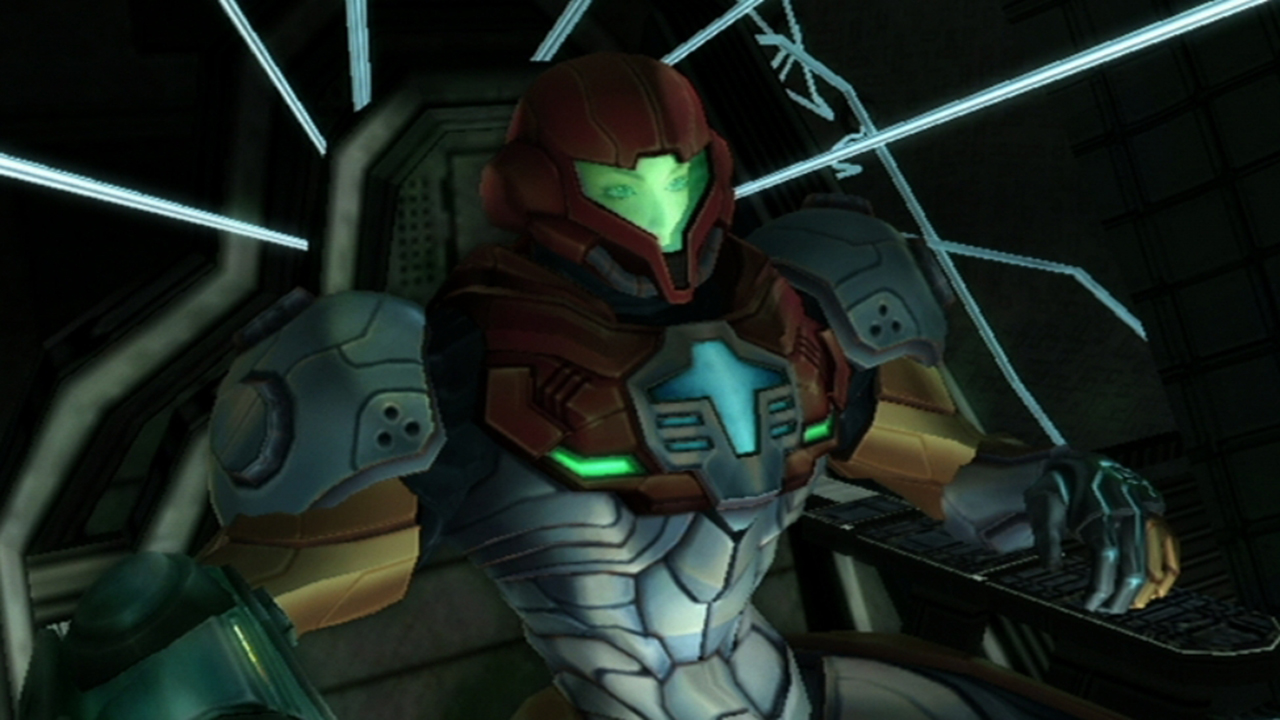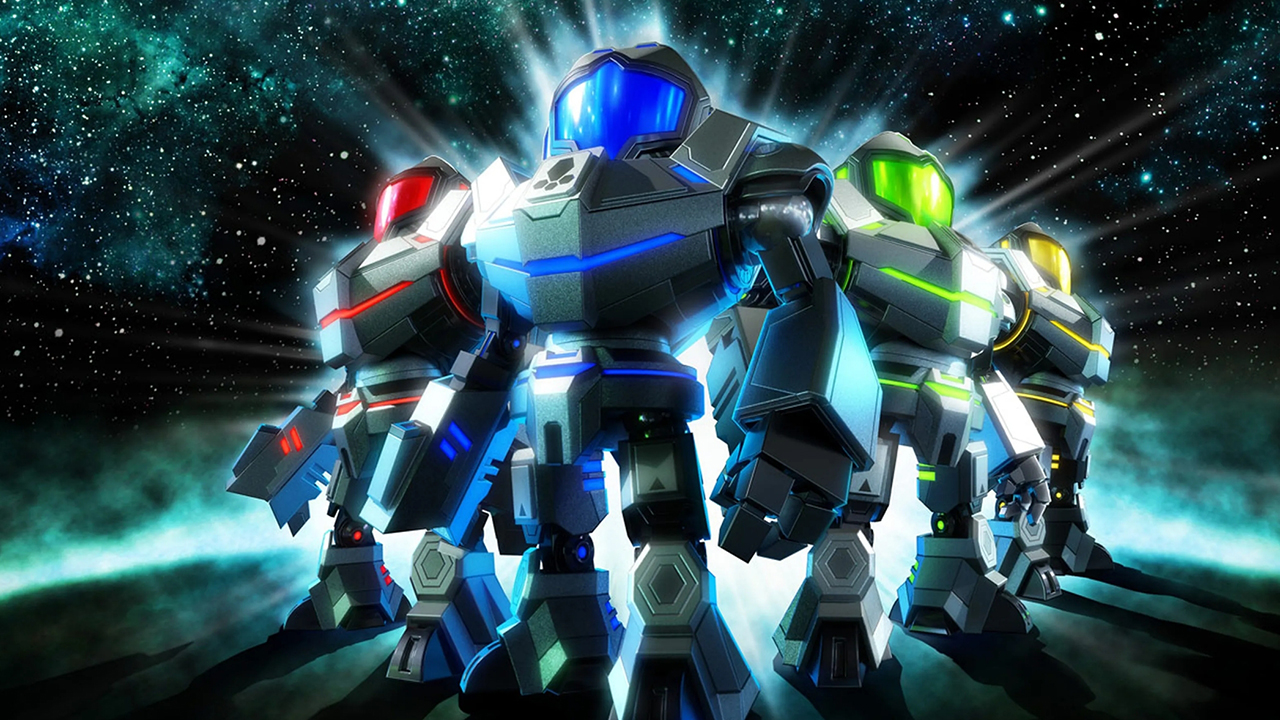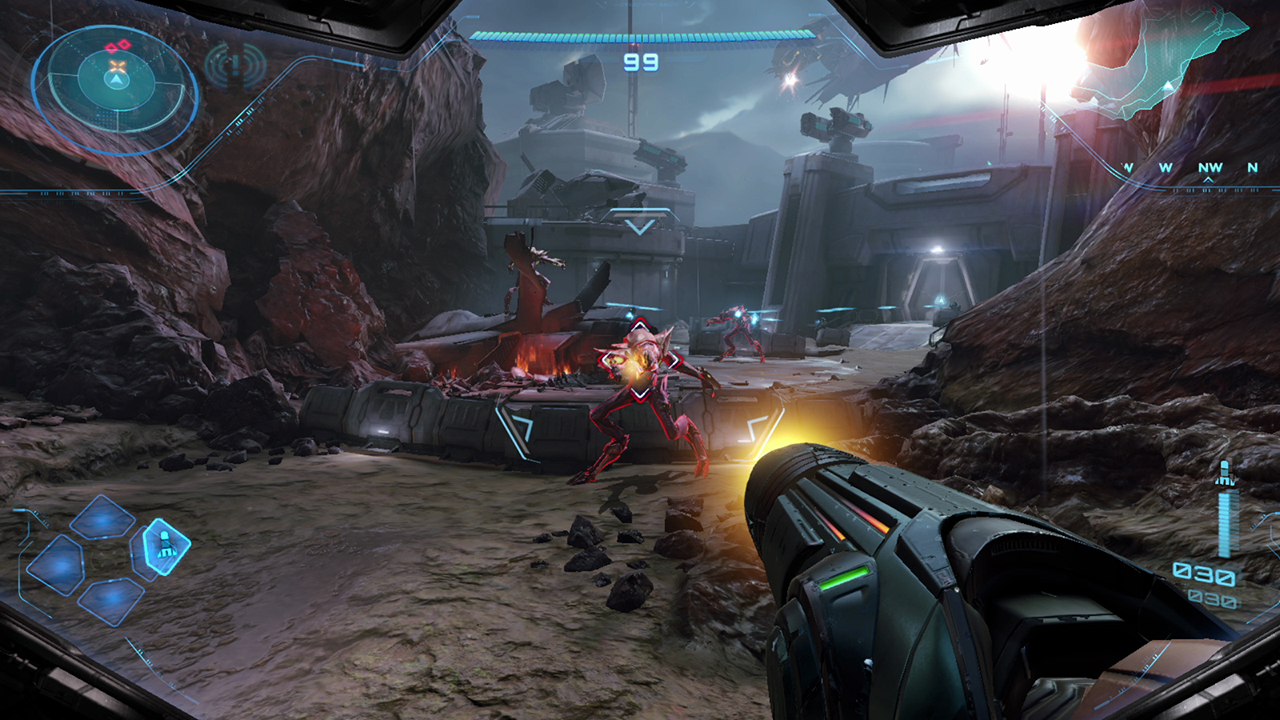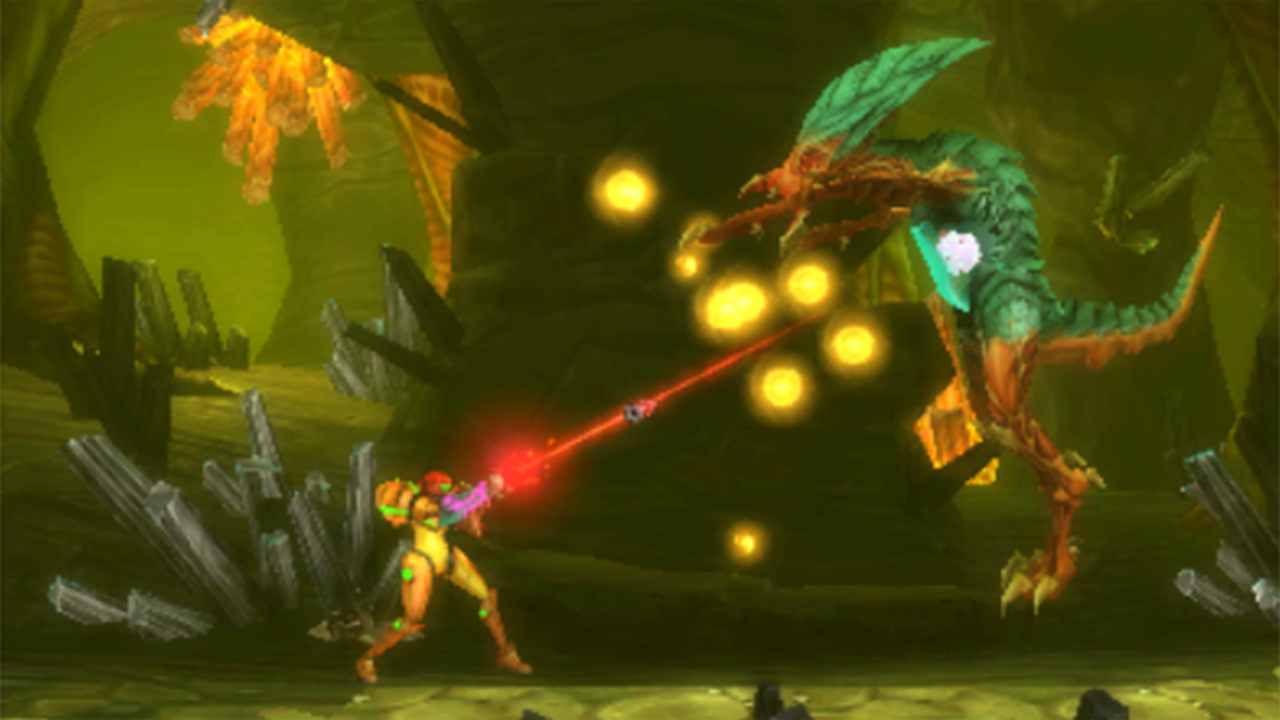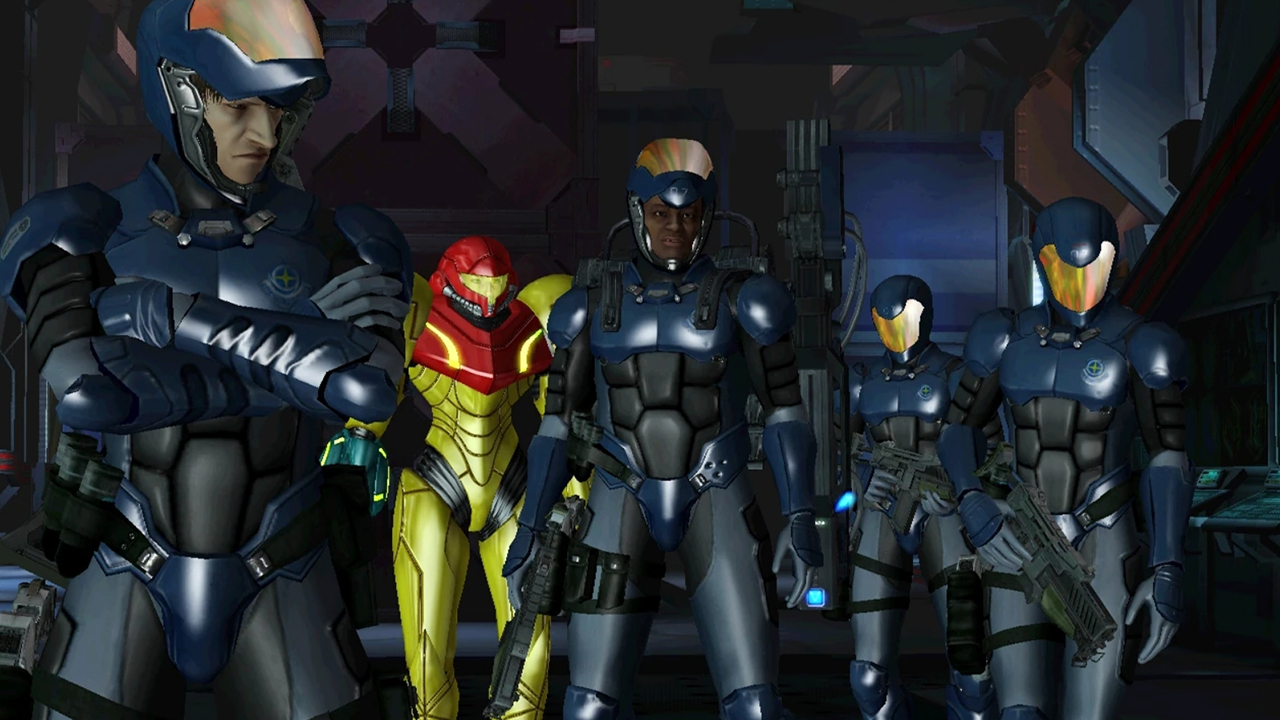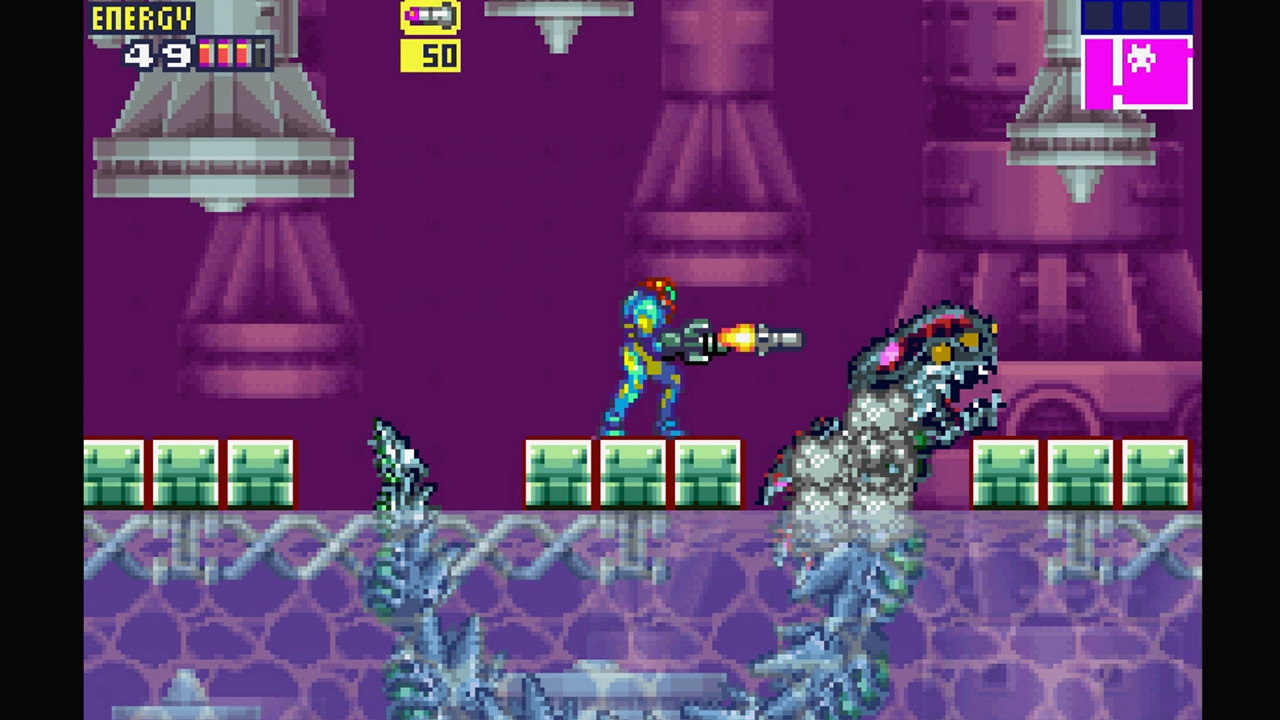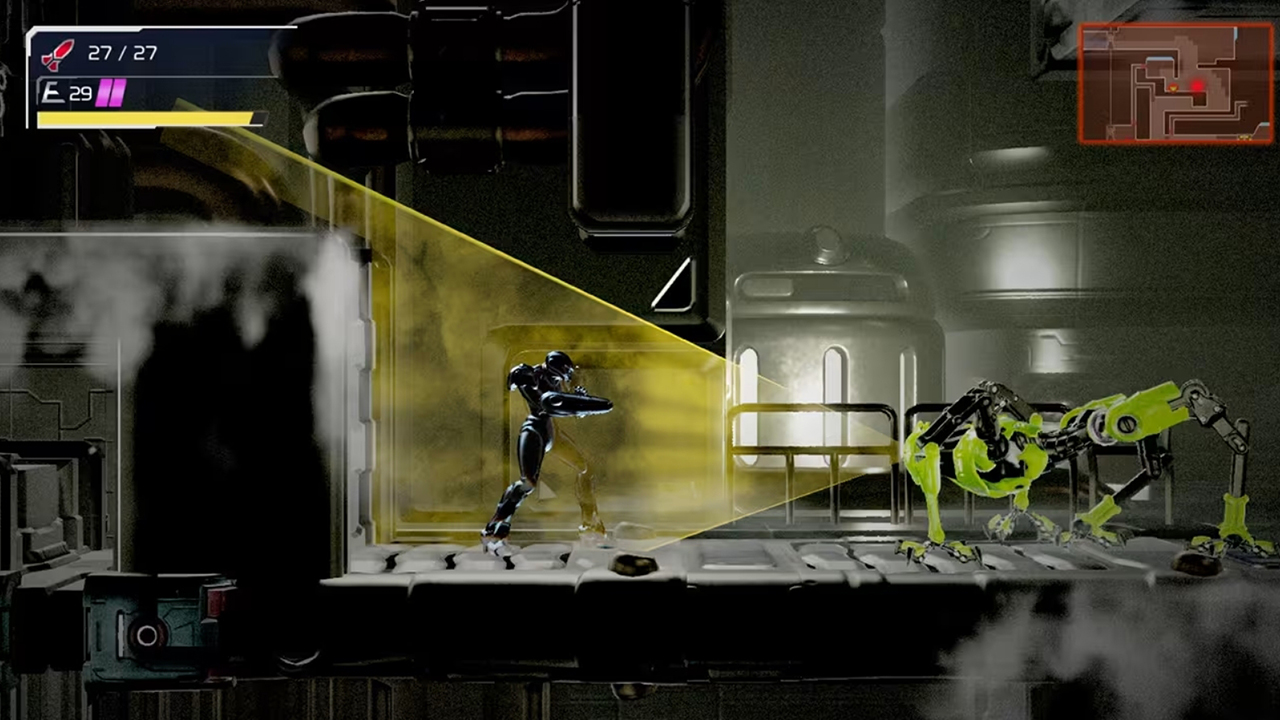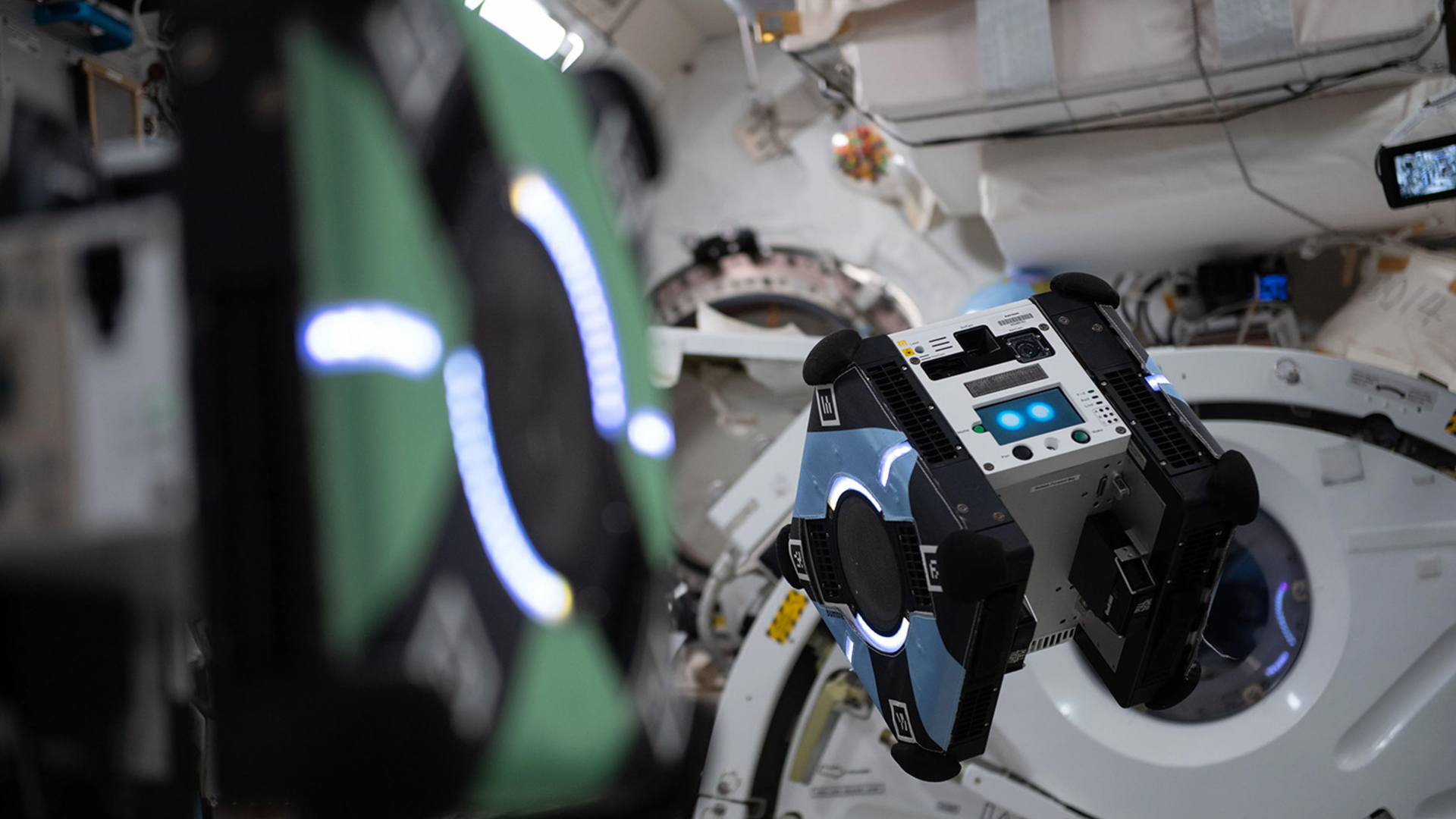Metroid games in order: Chronological and release
As we prepare for the arrival of Metroid Prime 4, here's the complete timeline of the entire Metroid series, in both chronological and release order.
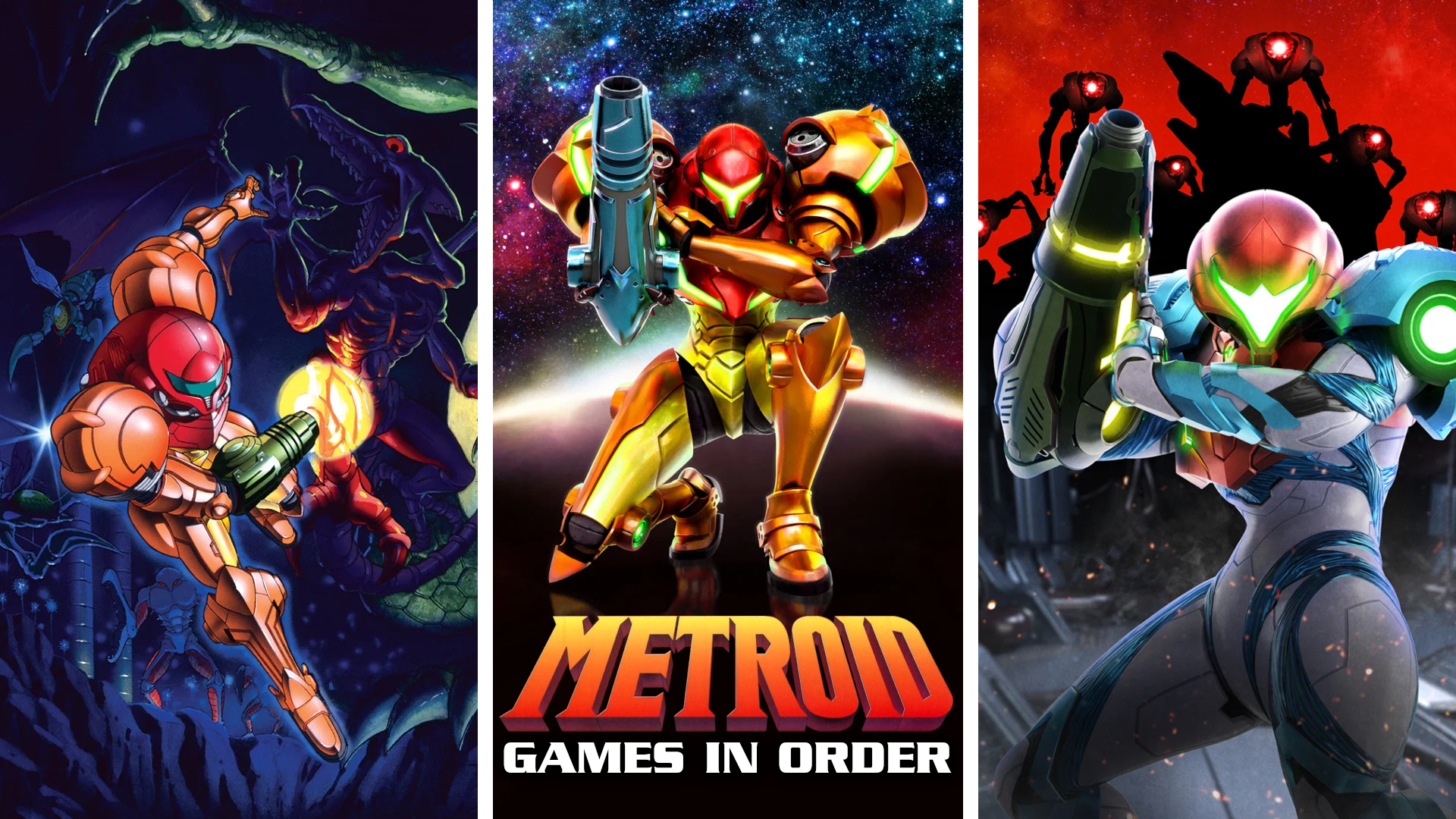
Almost a decade after the third installment, Metroid Prime 4: Beyond is coming to the Nintendo Switch. However, the larger Metroid series has remained quite active, and it's rather hard to navigate if you haven't been around since the beginning. This article aims to guide newcomers and lapsed bounty hunters through all the Metroid games in order, both chronologically and by release date.
Chances are you're already familiar with some of Samus Aran's 2D side-scroller adventures, but even those are a bit all over the place – especially when we include ports, re-releases, and remakes! To make things more confusing, the 3D Metroid Prime saga is slotted between the earlier OG Metroid games, and to this day Nintendo continues to add new entries to the chronology.
While Metroid might not be as popular as Nintendo's typically family-friendly IPs, lovers of space games ought to give this enduring series a fair shake; Its cool level design, old-fashioned thrills, and unique atmosphere make the Metroid universe an underrated Nintendo franchise. Moreover, it's co-responsible (alongside Castlevania) for the birth of the 'Metroidvania' subgenre.
Ready to suit up and blast some Metroid butt? Here's a list of all the Metroid games in order.
Spoilers ahead for the entire Metroid series.
Metroid Games in Chronological Order
As the Metroid series evolved over the years, there have been numerous re-releases, remakes, and spin-offs. For the sake of clarity (and brevity), we won't be repeating entries and will instead bundle together the titles that depict the same part of Samus Aran's story. As it stands, here's what the timeline looks like:
- Metroid/Metroid: Zero Mission
- Metroid Prime
- Metroid Prime Hunters
- Metroid Prime 2: Echoes
- Metroid Prime 3: Corruption
- Metroid Prime: Federation Force
- Metroid Prime 4: Beyond
- Metroid II: Return of Samus/Metroid: Samus Returns
- Super Metroid
- Metroid: Other M
- Metroid Fusion
- Metroid Dread
It must be noted that the in-universe 'Cosmic Calendar' used by the Galactic Federation has, to say the least, been inconsistent – especially as the series grew and the Prime saga introduced 'cycles' as another way to measure the passage of time.
Breaking space news, the latest updates on rocket launches, skywatching events and more!
While there's a clear order to the franchise's key events, our personal recommendation is not to get too hung up on the years and whatnot.
1. Metroid/Metroid: Zero Mission
- Platforms: NES, GBA, Wii, Wii U, 3DS, Nintendo Switch
- Developer: Nintendo R&D1, Intelligent Systems
Up first we have 1986's Metroid. This took a while to reach North America and EU players, but made a splash regardless thanks to the colorful and ambitious (back then) presentation, catchy soundtrack, tight controls, and mold-breaking level design. Purists will want to play the original NES game, but, in truth, the remake Metroid: Zero Mission (2004) was a big improvement all round. Thankfully, you can legally access both via the Switch Online service right now.
The story setup was simple yet intriguing: In the year 20X5 of the Cosmic Calendar, Space Pirates want to use the Metroid species, native to the planet SR388, for galactic domination. The Metroids are floating organisms that can drain other being's life force and thus pose an existential threat to the entire galaxy.
After a failed assault on Zebes, the Galactic Federation's police force sends in Samus Aran, a lone but highly capable bounty hunter, to destroy Mother Brain, an organic supercomputer. Things get more complicated quite quickly, and the fact Zebes is the planet where Samus was raised by the extinct Chozo civilization only adds to the overall mystery.
2. Metroid Prime
- Platforms: GameCube, Wii, Nintendo Switch
- Developer: Retro Studios
If we follow the chronology, the second entry isn't actually Metroid II. We have to jump to 2002's Metroid Prime, originally released for the Nintendo GameCube and then later ported to the Wii as part of the Metroid Prime: Trilogy bundle.
In 2023, the Nintendo Switch received an in-depth Metroid Prime Remastered game (bordering on a remake) – in our personal opinion this is the best way to experience the modern classic! As stated before, the Prime games are FPS despite the level and ability-design similarities, so certain players might find them more difficult to navigate.
In the first installment of the Prime saga, Samus travels to Tallon IV after receiving a distress signal. There, the Space Pirates (of course) are now trying to use a dangerous substance called Phazon, which happens to be linked to both the Chozo and an object that crashed on the planet long ago. Even though it was contained by the Chozo, Phazon remains a threat and so Samus must use abilities and items left behind to defeat the source. Needless to say, many enemies and riddles are between Samus and her main objective.
3. Metroid Prime Hunters
- Platforms: Nintendo DS, Wii U
- Developer: Nintendo Software Technology
Veterans and newcomers alike regularly write off Metroid Prime Hunters as one small spinoff for the Nintendo DS; you kinda forget about it and move straight into Prime 2. That said, it's very much a key piece of the larger story, especially as we move into Metroid Prime 4 (more on that later). The bad news is that it can only be accessed legally via second-hand DS copies or a Wii U with the Virtual Console re-release on it. Hopefully, there will be better options in the future.
The game kicks off after the Galactic Federation receives a telepathic message which points to the remote Alimbic Cluster in the Tetra Galaxy. There, another ancient species disappeared long ago and left behind artifacts. Lured by a promise of 'Ultimate Power' (totally legit), Samus and six other rival bounty hunters – Trace, Weavel, Noxus, Spire, Kanden, and Sylux – race to secure the power.
4. Metroid Prime 2: Echoes
- Platforms: GameCube, Wii
- Developer: Retro Studios
Metroid Prime 2: Echoes arrived exactly two years after the original and served as a direct sequel, with developer Retro Studios trying to make the storytelling weightier alongside an uptick in the overall difficulty. While largely praised by the press and fans alike, some found it to be a bit too harsh and often confusing to navigate. Plus, the four-player local multiplayer mode failed to impress.
The story sees Samus investigating the planet Aether after communication with the ship GFS Tyr is lost. Unsurprisingly, Samus finds a terrible new threat upon her arrival, with the crew all dead and possessed by inter-dimensional beings known as Ing.
On the other hand, Samus comes across the remaining members of the Luminoth race. Samus then goes on to help them fix a dimension-splitting catastrophic event which created the Dark Aether dimension as well as the Ing. As if that wasn't enough trouble, evil doppelgänger Dark Samus shows up too.
5. Metroid Prime 3: Corruption
- Platforms: Wii
- Developer: Retro Studios
In 2007, Metroid made the jump to Wii with a third Prime installment that embraced the console's unique control possibilities – which also caused the game to be delayed several times – and upped the level of the visuals and immersive first-person gameplay. Though it was a big success, many critics and players weren't entirely sold on the new motion controls and mostly continuist approach to the overall game design.
This entry has Samus teaming up with other bounty hunters again, namely Rundas, Ghor, and Gandrayda. All of them are sent by the Federation to repair the Aurora Units (organic supercomputers) and investigate unsettling Space Pirate operations.
Led by Dark Samus, the Space Pirates corrupt the planet Norion and then go on to knock out the bounty hunters using a Phazon Beam. A whole month goes by before Samus awakens to find that her fellow bounty hunters have gone MIA.
Tasked with defeating the corrupted bounty hunters, Samus must also destroy the remaining Phaaze Leviathans (a group of living meteors that have been spreading the dangerous Phazon).Last but not least, Samus must save herself from the Phaaze-born corruption, all whist dealing with Dark Samus' unrelenting attacks on both her and the Federation.
6. Metroid Prime: Federation Force
- Platforms: 3DS
- Developer: Next Level Games
Largely considered to be the 'black sheep' of the franchise, Metroid Prime: Federation Force was an ill-timed spinoff that strayed too far from what made both the Prime saga and the Metroid series so special. With a greater emphasis on shooting and multiplayer over the satisfying mix of exploration and action the franchise is known for, it was a weak attempt at doing 'something else' with the IP. It also kinda added insult to injury after Other M's mixed reception back in 2010.
Regardless, Federation Force pushed the Prime storyline forward in a significant way. After the destruction of all Phazon in the galaxy, the Space Pirates are weakened but still plotting to destroy the Federation. In response, Operation Golem begins: Mechs are produced to end the Pirate problem once and for all. Here players control the marines that are tasked with piloting the mechs and destroying the Pirates found across the Bermuda System. The (missable) post-credits scene sets up Metroid Prime 4, but we didn't know that nine years ago.
7. Metroid Prime 4: Beyond
- Platforms: Nintendo Switch
- Developer: Retro Studios
The current seventh entry in the Metroid chronology is the fourth Prime game, the likely reason why many of you are reading this article in the first place. We know it's coming in 2025 and that it's a direct continuation of 3 and Federation Force's events. The Nintendo Switch was always meant to be the main target platform, but we're expecting a beefed-up release on Switch 2 as well due to its timing.
The plot is being kept under wraps, but our first proper look at the game revealed that shady bounty hunter Sylux, who'd already been mean towards Samus in the past, had been chosen as the main villain (unless there's a huge twist lurking in the shadows). In any case, they've teamed up with Space Pirates and broken into a research facility in search of Mochtroids (Metroid clones).
8. Metroid II: Return of Samus/Metroid: Samus Returns
- Platforms: Game Boy, 3DS, Nintendo Switch
- Developer: Nintendo R&D1, MercurySteam, Nintendo EPD
At this point, we circle back to the 2D Metroid entries and hit the second game in release order. Originally developed for and released on the first Game Boy, Metroid II took bigger swings with its story, setting, and deeper gameplay.
That said, the graphics and audio weren't super great on the OG Game Boy, and it was a bit of a head-scratcher to see Nintendo moving the still-infant series from home consoles to its handheld. After some criticisms, its follow-up targeted the more advanced SNES console. Nowadays the sensible course of action is to pick up the excellent 3DS remake Metroid: Samus Returns, released in 2017.
Some time has passed since the events of Federation Force and Prime 4, and Metroids are still a huge threat to the galaxy. The Federation employs Samus to exterminate them all, so she heads to SR388, going deep into the planet's caverns to carry out her mission. Along the way Samus comes across a freshly hatched Metroid, who imprints onto her. Samus spares the baby Metroid and together they make their way back to the planet's surface and board the gunship.
This game also introduces X Parasites. You learn more about this by 100% completing the game which unlocks the full Chozo Memories gallery. This reveals more information about the Chozo's relationship with SR388 and how they actually created the Metroids to combat the X Parasites.
9. Super Metroid
- Platforms: SNES, Wii, Wii U, 3DS, Nintendo Switch
- Developer: Nintendo R&D1, Intelligent Systems
Super Metroid is the old 2D entry which hasn't been remade yet, but it holds up quite well thanks to advancements that were allowed by the SNES' hardware. In this game, new elements like the inventory screen and an 'automap' were introduced. Moreover, Samus could now fire in all directions. The end result was praised by most players and critics. In fact, game experts regularly bring it up as the one Metroid entry responsible for co-creating the aforementioned 'Metroidvania' subgenre.
The story takes place shortly after the events of Metroid II, with Samus returning to the academy where she'd left the baby Metroid only to find more trouble. Sadly, much of the plot feels like a retread of the original game, with Zebes being the main setting and the Space Pirates once again trying to clone the Metroids. Several huge enemies make a return too, which rounds out the feeling of Super Metroid being almost a soft reboot of the series. The narrative does take a detour near the end though.
10. Metroid: Other M
- Platforms: Wii
- Developer: Team Ninja, Nintendo SPD
Many fans and critics would have you believe Other M was an unmitigated disaster, but it ended up landing a score of 79 on Metacritic. Series creator Yoshio Sakamoto approached Team Ninja to develop a modernized take on the classic Metroid, which borrowed elements from the Prime games too.
Metroid: Other M saw more importance given to characterization and plot, trying to bring the game closer to the more cinematic action-adventure games of its time. For many, it was a refreshing blend of elements that bridged the gap between Prime and the mainline saga, while others deemed it too muddled to make a lasting impression.
Following the destruction of all remaining Metroids and Mother Brain on Zebes, Samus explores the B0TTLE SHIP space station alongside former commanding officer Adam Malkovich and his platoon. The new investigation reveals that a splinter group within the Galactic Federation has created a clone of Samus' archenemy Ridley, as well as ice-resistant Metroids. You know what has to be done by now.
11. Metroid Fusion
- Platforms: GBA, 3DS, Wii U, Nintendo Switch
- Developer: Nintendo R&D1
Before Metroid: Other M, the direct follow-up to Super Metroid was 2002's Metroid Fusion, one of the franchise's highest points. In fact, many would argue it's the best 2D Metroid by far. Making full use of the GameBoy Advance's graphical capabilities, it sported fantastic 2D visuals with a distinct look that has aged remarkably well. When adding in the tight controls, sharp music, and audio work, plus the even more refined core gameplay, it's hard to refute such praise.
Metroid Fusion picks up the X parasite story thread from the end of Metroid II. It kicks off with Samus on planet SR388 protecting a Biologic Space Laboratories (BSL) research team. As a direct result of the Metroids' extermination, the X parasites have grown in numbers. Samus is attacked and infected by one of them; although she can be saved, her infected Suit soon becomes the SA-X mimic, which wreaks havoc in the BSL's research space station and liberates other X parasites. It's up to Samus to save the day again, all alone in enemy territory and facing another chilling version of herself while dealing with a puzzling menace which could be even worse than the Metroids.
12. Metroid Dread
- Platforms: Nintendo Switch
- Developer: MercurySteam, Nintendo EPD
We arrive at the end of this list with Metroid Dread, co-developed by MercurySteam and Nintendo EPD, following the success of Metroid: Samus Returns. When it launched in 2021, roughly 19 years had passed since the previous all-new side-scrolling entry in the series, Metroid Fusion. Thanks to the winning formula of the Nintendo Switch's hardware and interest in Metroid having a resurgence after Samus Returns, Metroid Dread was a massive success and eventually became the best-selling Metroid game of all time. Therefore, we wouldn't be surprised if a new 2D Metroid is revealed sooner rather than later.
With stealth mechanics now in the mix, Metroid Dread doubled down on the scarier bits of Metroid Fusion to create gameplay sections where deadly EMMI robots have to be avoided, at least until Samus regains her strength (big shock).
The story begins sometime after the events of Metroid Fusion, when the Galactic Federation learns of an X parasite that's alive and seemingly located on the unknown planet of ZDR. Instead of risking more human lives, EMMI robots are sent in to investigate. When contact with them is lost, Samus, the only person immune to the X, goes in to deal with the problem... only to find that the robots have been reprogrammed to hunt her. Obviously, that's just the tip of the iceberg.
Metroid games in release order
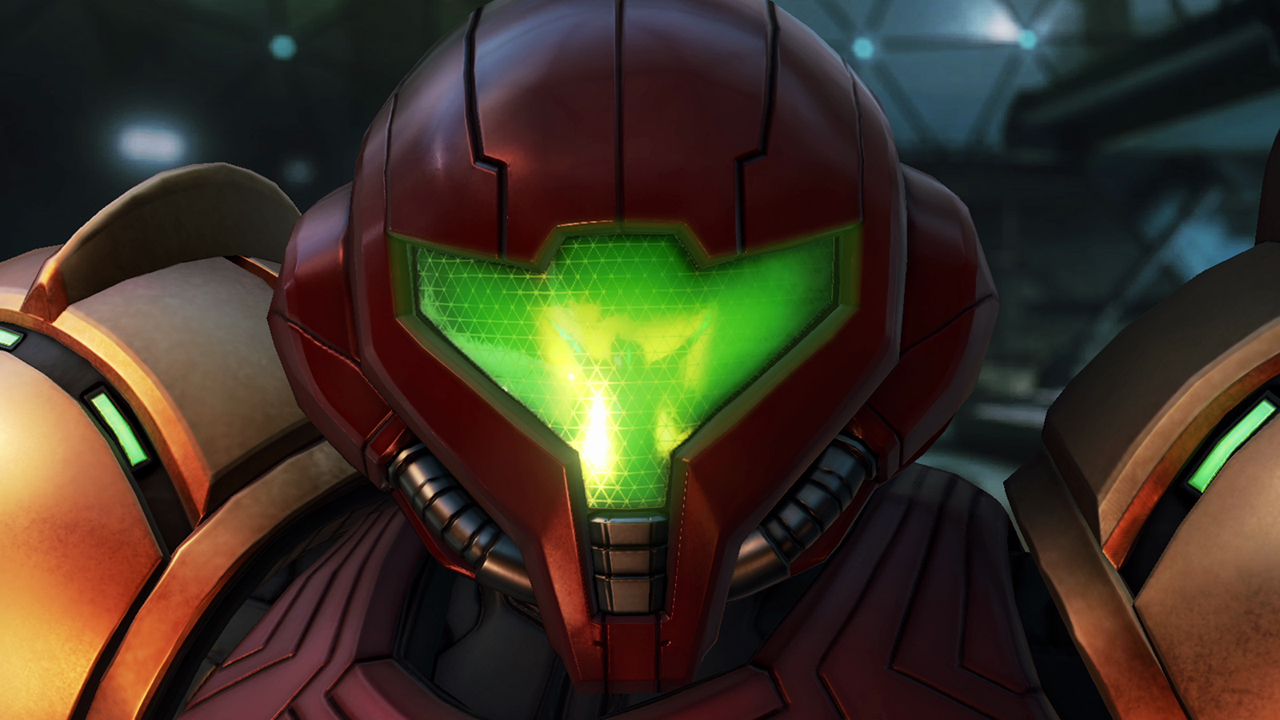
We've just made sense (hopefully) of the entire Metroid timeline, but the full release order list is substantially longer due to the presence of the aforementioned re-releases, remakes, and whatnot. Also, there was a pinball spinoff that we've skipped for obvious reasons. In any case, here's the complete release timeline up to this year's fourth Prime installment:
- Metroid (1986)
- Metroid II: Return of Samus (1991)
- Super Metroid (1994)
- Metroid Fusion (2002)
- Metroid Prime (2002)
- Metroid: Zero Mission (2004)
- Metroid Prime 2: Echoes (2004)
- Metroid Prime Pinball (2005)
- Metroid Prime Hunters (2006)
- Metroid Prime 3: Corruption (2007)
- Metroid Prime: Trilogy (2009)
- Metroid: Other M (2010)
- Metroid Prime: Federation Force (2016)
- Metroid: Samus Returns (2017)
- Metroid Dread (2021)
- Metroid Prime Remastered (2023)
- Metroid Prime 4: Beyond (2025)
Fran Ruiz is our resident Star Wars guy. His hunger for movies and TV series is only matched by his love for video games. He got a BA of English Studies, focusing on English Literature, from the University of Malaga, in Spain, as well as a Master's Degree in English Studies, Multilingual and Intercultural Communication. On top of writing features and other longform articles for Space.com since 2021, he is a frequent collaborator of VG247 and other gaming sites. He also serves as associate editor over at Star Wars News Net and its sister site, Movie News Net.
You must confirm your public display name before commenting
Please logout and then login again, you will then be prompted to enter your display name.
